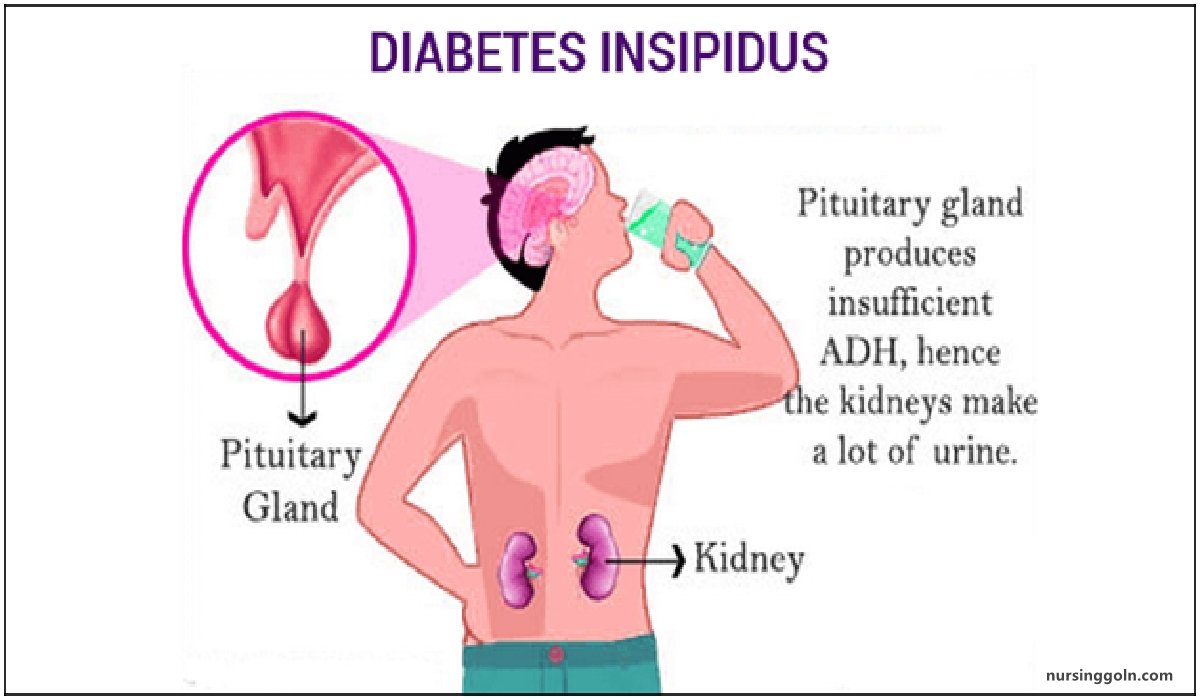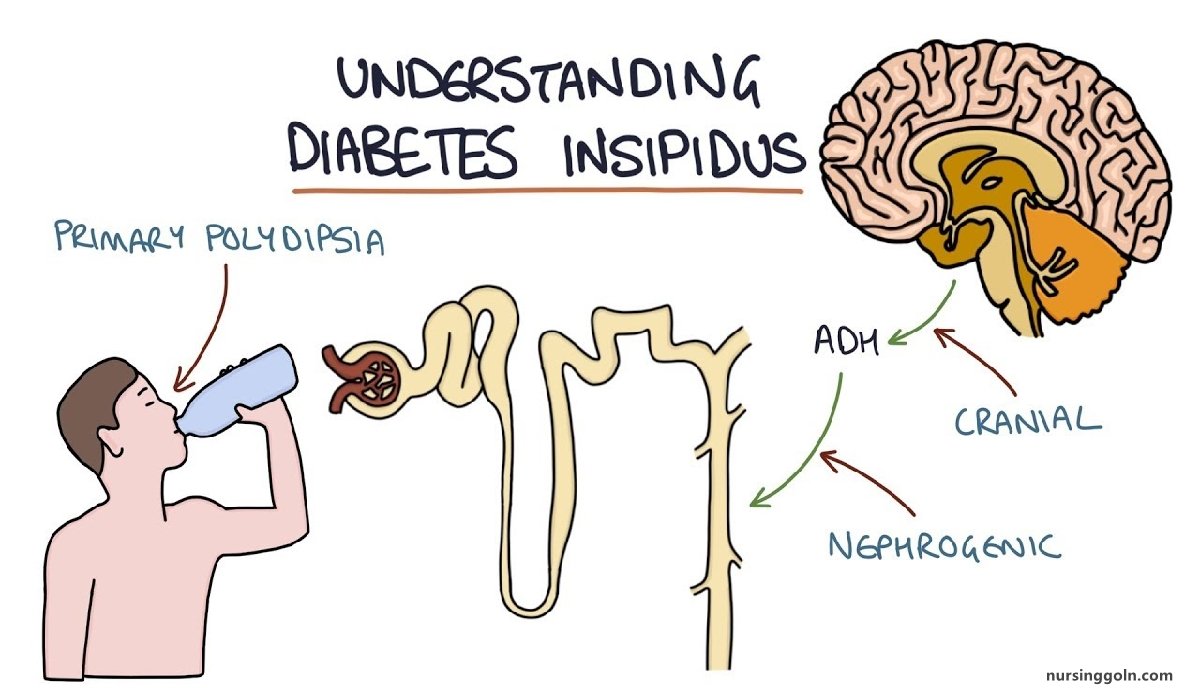Diabetes Insipidus – This course is designed to understand the concept of community health nursing: nurses’ roles and interventions in family health, school health, occupational health, environmental health, elderly health care, gender issues, disaster management and principles and terminology of epidemiology. The aim of the course is to acquire knowledge and skills in community health nursing.

Diabetes Insipidus
Diabetes insipidus (DI), is the disorders of the posterior pituitary gland due to a deficiency of antidiuretic hormone (ADH).
(Ref: Paediatric Nursing, Parul Datta/3rd/392)
Characteristics of Diabetes Insipidus:
1. Failure of the body to conserve water due to a deficiency of ADH
2. Decreased renal sensitivity to ADH
3. Suppression of ADH secondary to excessive ingestion of fluid, i.e. Primary polydipsia.
(Ref: Paediatric Nursing, Parul Datta/34/392)
Classification of Diabetes Insipidus:
| Central or neurogenic diabetes insipidus | It may be due to- a) Congenital and acquired causes leading to low level of ADH.
b). Acquired causes are due to –
|
| Nephrogenic diabetes insipidus: | a) It occurs due to renal unresponsiveness to the ADH b) Caused by chronic renal disease. |
(Ref: Paediatric Nursing, Parul Datta/34/392)
Clinical Features of Diabetes Insipidus:
Infant with DI present with
- Excessive crying
- Quieted with water more than milk feeding.
- They also have rapid weight loss due to water preference over feeding.
- Sunken fontanel with dehydration
- Constipation and
- Growth failure.
The child with DI manifests suddenly with the disease. The child presents with –
- Excessive thirst and polyuria.
- Some patients may present with nocturnal enuresis.
- There is pale dry skin with reduced sweating and weakness.
- Dehydration,
- Hyperthermia
- Poor appetite.
- Polyuria produces disturbances in rest, sleep, play and schooling.

Management of Diabetes Insipidus:
Specific treatment:
- Daily replacement of ADH using desmopressin (DDAVP), a synthetic analogue is necessary in IM or SC route. It can be given as nasal spray or in oral or sublingual route.
- Thiazide diuretics in nephrogenic DI can be administered.
Supportive care:
- Sufficient water intake
- Maintenance of intake and output,
- Prevention of fluid and electrolyte imbalance,
- Low sodium intake and recording of body weight.
- Care of dry skin
- Safety measures in weakness
- Adequate nutritional intake in poor appetite
- Prevention of constipation and hyperthermia
- Special mouth care with soft tooth brush
- Promoting good sleep
Advice:
- Parents should be explained about the care after discharge.
- Psychogenic compulsive water drinking may requires psychotherapy.
Prognosis:
- The prognosis of the disease depends upon adequate treatment. The disease is a chronic condition and usually not life-threatening.
(Ref: Paediatric Nursing, Parul Datta/34/392-93)

Complications of Diabetes Insipidus:
- Hypovolemic hypotension
- Hypernatremia
- Precocious puberty
- Visual disturbances
- Emotional disorders.
(Ref: Paediatric Nursing, Parul Datta/34/392)
Read more:
